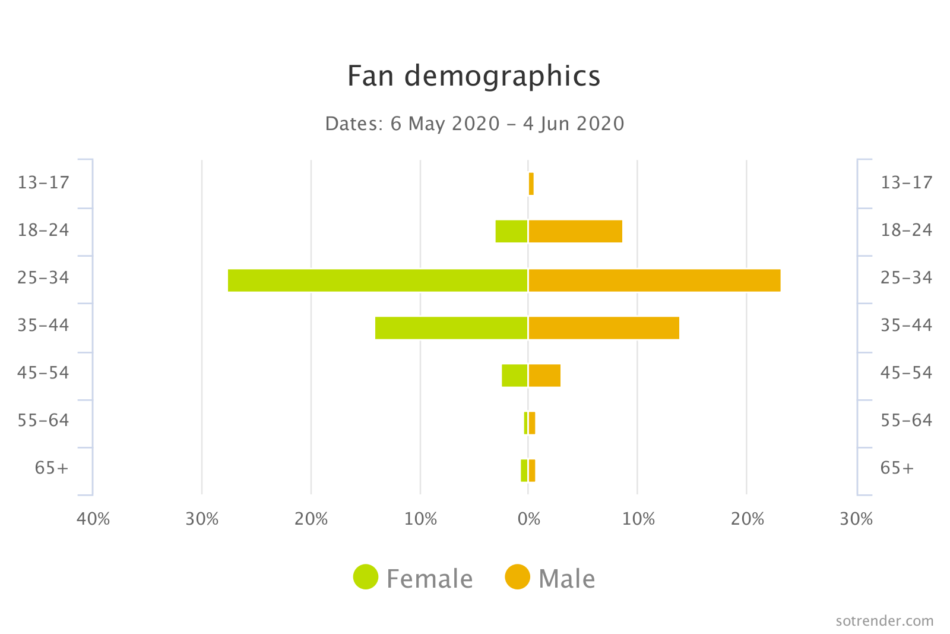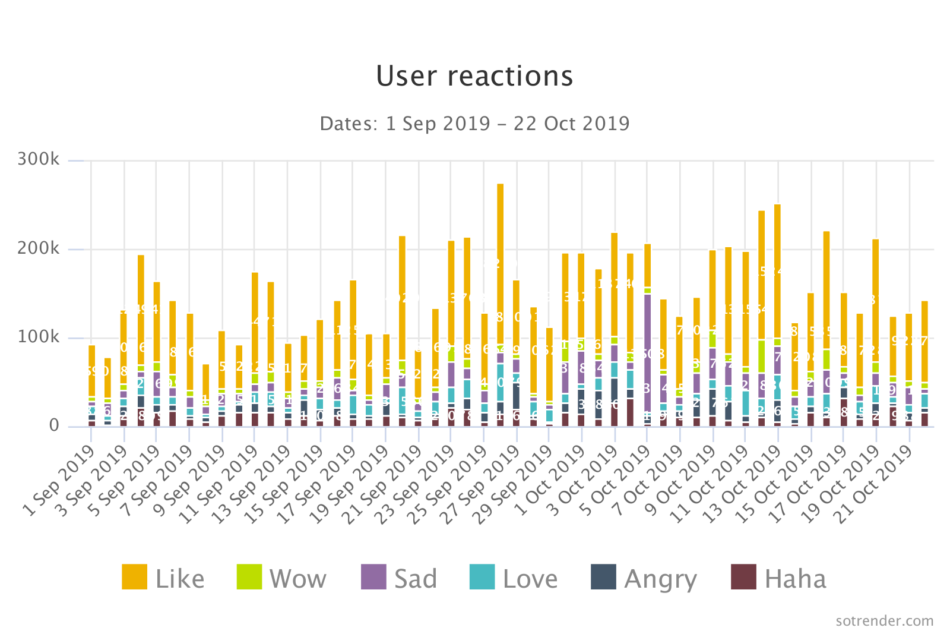Every business should learn more about their audience before they start to market to them. If you’re trying to sell products to the wrong people, you’ll waste each other’s time. This is why it’s crucial that you come up with a strategy targeted at the people who are actually interested in what you have to offer. But how do you find them?
I guess you’re here because you’re launching a new product or have just started learning about social media marketing. Either way, learning how to find out who your audience is should be the first step of your social media strategy.
There are so many tools and methods out there, but it takes time to figure out what will work for you. So instead of learning through trial and error from the get-go, we’ve prepared a list of tricks you can use to learn what you need to know about your potential customers on social media.
Let’s get started!
Research the market and your competition
Did you know that there are marketing versions of JSTOR and ResearchGate? You just need to take a look at what they have to offer and what kind of data they collect. I’ll list a few that are worth exploring to get some insight into your potential clients.
Mintel
Mintel is an agency that collects data related to product launches, consumer spending, trends, and market research. Their service gives you the opportunity to deep dive into several industries over 34 markets. From a marketing perspective, you will learn about changes in consumer behavior and motivation.
Some of their recent articles include descriptions about how the coronavirus impacted several sectors including healthcare and eSports, predictions for consumer behavior by 2030, and a global COVID update.
Market Research
An alternative to Mintel would be Market Research. They can provide you with reports and insights from 350 publishers. For example, you’ll be able to find detailed information about how customers make purchases, what triggers a purchase, and more. This type of information could give you insights into what your audience reacts well to and what doesn’t interest them. You will quickly narrow down your target audience instead of trying to completely change the product to meet an unattainable audience.
But just like Mintel, these reports are rather general to the industry and expensive. Some of the reports can go for $2000, which might be a hefty sum for a report that isn’t specific to your company. This is just something to consider when you are planning your budget.
Sotrender
There’s no doubt that your competition has a headstart on who they should target their content to on social media.
You shouldn’t walk away from this thinking that you should copy their content. Instead, consider the themes they cover, what tone are they using, and how their audience reacts to it. If you’re in the fashion industry trying to target young adults, you don’t want to sound elitist and exclusive. Likewise, if your business is eCommerce, you don’t want to sound too casual.
When it comes to social media, you could explore all of this manually, or you could use an external tool to gather the data and present it for you in a way that’s easy to understand.
For example, if you wanted to know how your competitor’s audience is reacting, you can immediately get the answer from this type of chart from Sotrender. For this one, you don’t need to have access to an Insights profile because this is public data.
Interested in just specific reactions? Click the lines below in the legend to filter out the ones you don’t care about.
Or if you’re interested in finding out when your audience is online to adjust your schedule. You need a graph that easily explains exactly what day of the week and time, like this one.
Still, there are more things you need to know, like the basics about the audience themselves. We’ll go over a few more of them in the next sections.
Learn more about their demographics
Before we begin, you need to know that it’s only possible to analyze demographic data of social media profiles that you own, and not your competitors’. This is because you need access to Insights profiles that aren’t available otherwise.
Other than that, this part is actually pretty straightforward. When we’re talking about demographics, we mean things such as:
- Age

For example, this chart makes it easier to understand how your target audience’s demographics look, both in terms of gender and age groups. Just make sure to follow any changes here, since you might need to change your strategy. - Gender
- Language their app is set to
- Location (city vs. country). You might even have to adjust your content to fit with a more diverse audience, especially if they are diverse and speak more than one language.
The reason for this is because users that belong to different categories will have different needs. If you know you’re targeting people who are in their thirties, their lifestyles are going to be rather different from those in their twenties. We’ve previously talked about how marketing to Gen Z is different from marketing to other generations, so we suggest you check it out for more details.
Find out what content they want to see
You probably have some ideas about what you should be posting on social media by now. Let’s say you changed your content strategy based on those ideas, but now you want to see what type of content performed better. When it comes to your social media channels, you can use Sotrender and take a look at your top posts.
In the previous graphs, we’ve shown you that you can click on a data point to see what post got the attention. However, you might want to see all of your best posts ranked in order. You can find out what posts or tweets performed best, and organize them according to the metric you’re interested in. We suggest you organize them by activity here. 😉
In Sotrender, you can check how many activities each post got, but you should still look a little deeper using a tool like Ahrefs. Aside from helping you determine what keywords you should be using, you can use it to analyze how popular your content is.
If you’re publishing content on other platforms (and not just your social media), you will be able to analyze that in Ahrefs. You’ll see changes in traffic and how many times the content was shared on users’ social media profiles. The same goes for your competitor’s websites and platforms. By the end, you will get all the info you need about which content had the highest reach and got the most interest on their website.

Interact with your audience
We always emphasize the importance of getting direct information from the source. Even with all of these analyses, you’ll be missing out on qualitative information. If you have the chance, talk to your fans to gain some insight. But don’t just dive into the comments section without a plan, you can follow some easy tips to get to know them.
Start conversations on your profile. Ask them what they want to see more of – on Instagram you can use a Sticker to get some answers and on Facebook, you can post polls. Of course, you will need to regularly participate and reply to the users. Remember to respond in a timely manner and to have a consistent tone.

There are different ways that you can go about doing that, and these are just a few examples. The Stickers for Instagram Stories are a really great place to get feedback straight from the source. However, we recommend you also explore what interests them in other online spaces since an Instagram audience could differ from your audience on Facebook or YouTube.
Get a deeper understanding of their interests online
At this point, it’s clear that you can access a variety of important social data for your strategy. Still, what if you just don’t have the time or want someone to explain it to you? In that case, you could get an Audience Scan report from Sotrender that will do just that. You will get an in-depth explanation that is vastly different from Facebook’s Audience Insights.
You’ll find out
- What your audience is interested in,
- which influencer is popular among your target audience,
- and what other brands are popular with your target audience
Want to see an example? We’ve prepared a case study so you can make the decision about if this analysis is the right one for your needs.
You can learn more about the analyses our analytics team conducts in this slideshow. 😉
However, there is another analysis that could reveal what type of topics your audience is interested in as well as how they perceive your company on social media and other online platforms.
The perk of having an analysis tailored to your individual brand is that you will know what will benefit your brand the most instead of testing out solutions that aren’t as viable. This is called the Audience Interests analysis, and you’ll get information about:
- Using sentiment analysis, you’ll see how your current audience responds to your brand mentions all over the web

- Since we have access to Google API and Facebook, we can pull more information from forums, blogs, and more
- Stay up to date with what trends have changed in your audience groups
- Learn where your content is consumed to adjust your strategy to go where your potential customers are
This is just a short description of what information we can gather for you, so if you want to know more, our Sales Team will be more than happy to get in touch with you and answer any questions you may have.
Break the ice and don’t be a stranger!
We’ve covered how you can start doing some basic research on your own, how to analyze your analytics yourself, and what other custom-tailored reports you have available to you. Knowing all of this, there’s no excuse for not bothering to learn more about who you’re marketing to. 😉
When you know what type of people are interested in your brand and what they want, you can see if it’s possible to adjust your product, your appearance, and the way you interact with your fanbase. Ultimately, you will reach your goal of creating a larger fanbase that has a good relationship with your brand.










